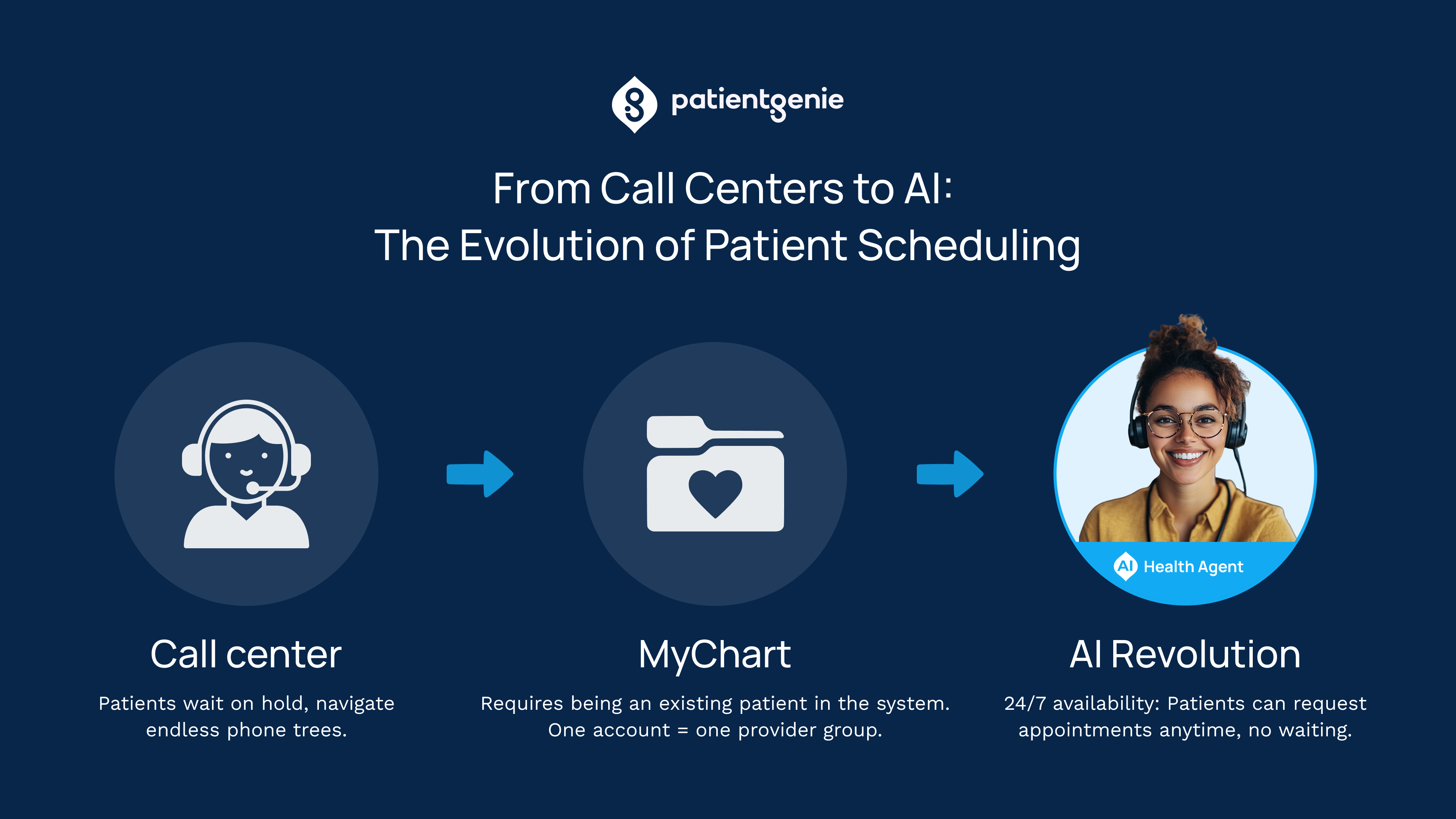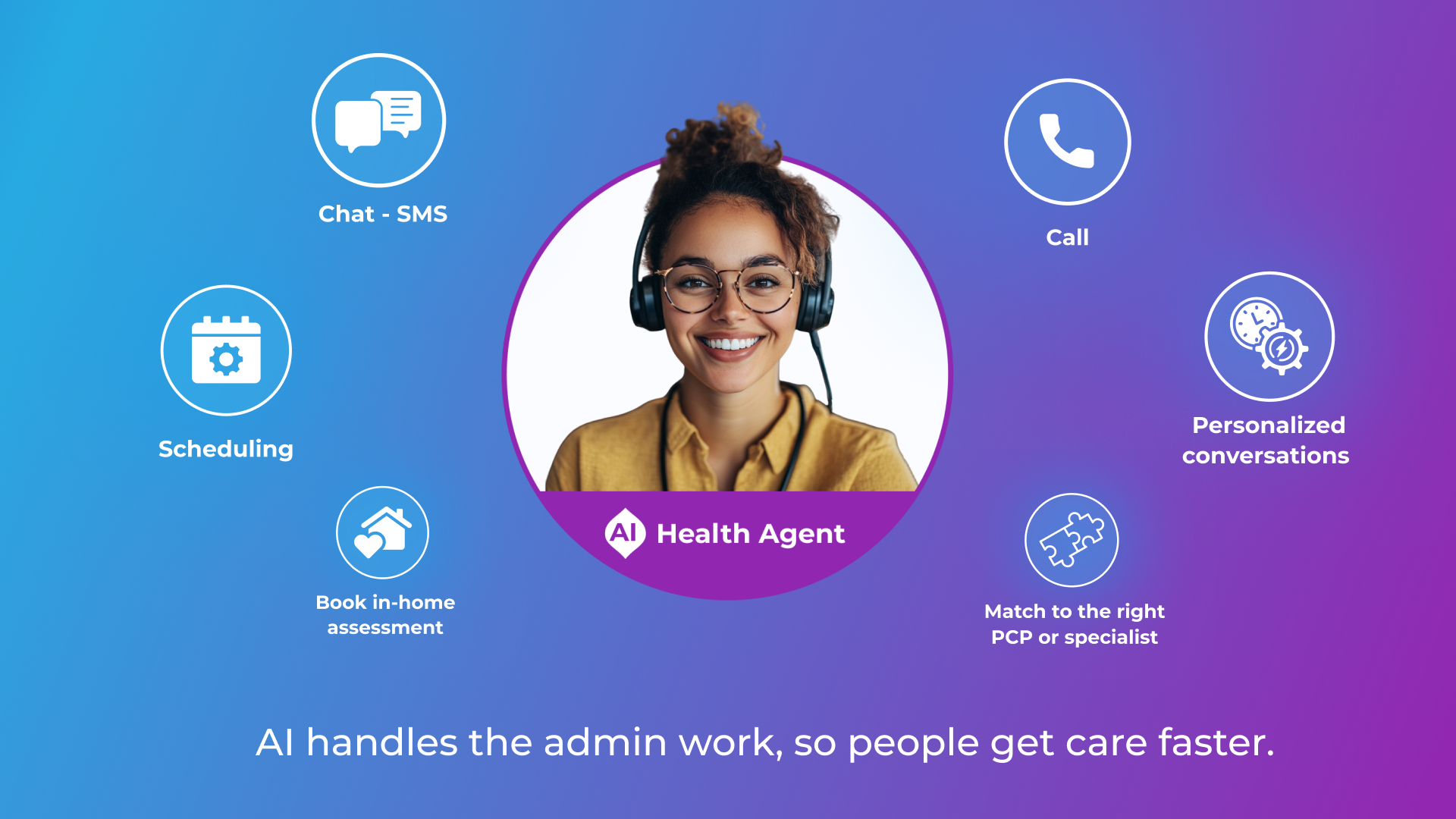8/5/2025
PatientGenie 2030: What a World with Frictionless Access Might Look Like

Maria wakes up at 7:03 AM. Her chest feels tight, but it’s probably nothing. She mentions it to Gennie—her health plan’s voice assistant—while getting ready for work. By 7:08, an appointment is booked with a nearby cardiologist who accepts her plan, speaks Spanish, and has availability that afternoon. A few minutes later, transportation is arranged. No portals. No hold music. No friction. Just care—delivered.
This is not science fiction. It’s the future of healthcare access.
And if we do this right, by 2030, it won’t just be possible, it will be the norm.
Healthcare’s last great barrier isn’t technology, it’s access. Over the next five years, AI-powered infrastructure will rewrite how people find, book, and experience care. This isn’t about incremental change. It’s about a structural shift that eliminates the friction we’ve all accepted for too long.
The Friction We’ve Come to Accept
Today’s healthcare system has normalized unnecessary barriers:
- Waiting weeks to schedule routine appointments
- Playing phone tag with provider offices
- Navigating confusing benefit rules or provider directories
- Missing preventative screenings because the system didn’t make them happen
These aren’t patient failures. They’re access failures—failures in process, systems, and infrastructure.
Access isn’t a portal or a phone number. Access is:
Right patient, right provider, right time—without unnecessary effort.
Building a Frictionless Future
At PatientGenie, we’re working toward a world where access is no longer a barrier. By 2030, here’s what I believe will define the future of care:
1. AI Agents That Don’t Just Listen, They Act
AI agents will become the infrastructure for connecting patients, providers, and plans.
Our AI Agent, Gennie, already engages on both sides:
- Calls members to schedule in-home assessments
- Matches them with primary care providers or specialists
- Coordinates transportation and referrals
- Conducts post-appointment follow-up to ensure nothing is missed
This is how we close the loop between plans, providers, and patients—automatically.
2. Matching Based on Context, Not Checkboxes
Today, patients get filtered by zip code and specialty. That’s not enough.
True precision matching must include:
- Language preferences
- Modality (in-person, virtual, in-home)
- Eligibility, referrals, and plan data
- Appointment availability and care history
Instead of a list of options, patients get a recommended, bookable solution.
3. Longitudinal Personalization
By 2030, AI-driven systems won’t just react—they’ll anticipate.
They’ll know when a member is overdue for a screening, behind on diabetes care, or at risk for a hospitalization, and prompt the next step automatically.
4. Invisible Interoperability
We’re connecting our agents to three critical data pipelines: payer data, patient data, and provider data, so that every interaction is accurate, contextual, and actionable.
By 2030, this level of connectivity will be table stakes. AI won’t just guess, it will know what’s covered, what’s available, and what’s appropriate.
What Changes for Everyone
When access becomes frictionless, the impact is transformative:
- Patients: Guided, scheduled, and supported in real time—no searching or waiting.
- Health Plans: From reactive gap management to proactive quality improvement.
- Providers: Fewer no-shows and mismatched visits, more time for care.
- Front Desk Teams: Freed from endless calls to focus on high-value patient interactions.
- Employers: Healthier, more productive employees and reduced preventable costs.
It’s a structural shift in how healthcare access works for everyone involved.
Why We Can’t Wait
If we stay where we are:
- Billions will be lost to preventable escalations
- Administrative burden will keep growing
- Disparities in access will widen
- Member trust will continue to erode
Making 2030 Happen Now
At PatientGenie, we’re already building the foundation for that future—AI agents that engage members directly, match them with the right providers, schedule in-home assessments, and follow up so care actually happens. We connect the dots between payer, patient, and provider data, making every interaction accurate, contextual, and actionable.
This isn’t about adding another tool. It’s about building the infrastructure that makes timely, appropriate care the default, not the exception.
We don’t need to wait for 2030. The technology is here. The shift has already started.
Let’s make 2030 happen, now.
Last news
From Call Centers to AI: The Evolution of Patient Scheduling
For decades, scheduling a healthcare appointment has meant waiting on hold, navigating phone trees, and hoping someone answers before you give up.
Now, a new era is here. AI-powered scheduling agents work around the clock to match patients with the right provider and book appointments — calling offices, verifying availability, and even making multiple attempts until the job is done.
9/24/2025PatientGenie 2030: What a World with Frictionless Access Might Look Like
What if getting care was as simple as saying, ‘I need help’? By 2030, it can be. At PatientGenie, we’re building the infrastructure for frictionless healthcare access—AI agents that call providers, engage members, schedule in-home assessments, match patients with PCPs, and coordinate follow-ups automatically. No portals. No hold music. No missed care. This isn’t the future—it’s happening now, and it’s changing how patients, providers, and health plans connect. Let’s make 2030 happen, now.
8/5/2025

